Midsummer is a novella about a family whose fate in part revolves around the grandfather’s spiritual experience when he uncovers the remains of a seventeenth-century Dutch ship while digging a subway tunnel under the area where the twin towers later existed in New York. When his pickaxe struck the remains of the ancient ship, a vision lit up the underground, convincing him that he was blessed. He is an artist who passes on his sketches of this event and his story about it to his youngest daughter, Elena. His younger son, Eddie, purposely ignores his father’s and his sister’s stories in his quest for a rational existence as an educated man and a successful banker. These characteristics of his help bring about the tragic death of his Elena’s only daughter.
All her life Joy has been haunted by this man she’s never met — her visionary grandfather, the artist Lorenzo. As it turned out, Lorenzo’s children did well in life, and almost a century later, his granddaughter Joy, a gifted linguist, marries the Canadian descendant of the lost ship’s captain. Yet nonno’s story also led to the death of Joy’s cousin Leonora, her Aunt Elena’s only child. It was a tragedy that might have been prevented by Joy’s father, Eddie, a man who’s been bruised by life and who seldom speaks to his sister. Yet in the year 2000, he has no choice. Wealthy Aunt Elena and Uncle Carlo are coming from Rome to New York City to celebrate their fiftieth wedding anniversary. They’ve invited the family to dine at the sky-high tower restaurant above the tunnel where nonno Lorenzo saw his vision long ago. On the first day of summer, Elena and Eddie will face each other at last. Midsummer is a story of family ties and fortune, and of finding peace as life nears its close, high above the historic place where nonno’s story began.

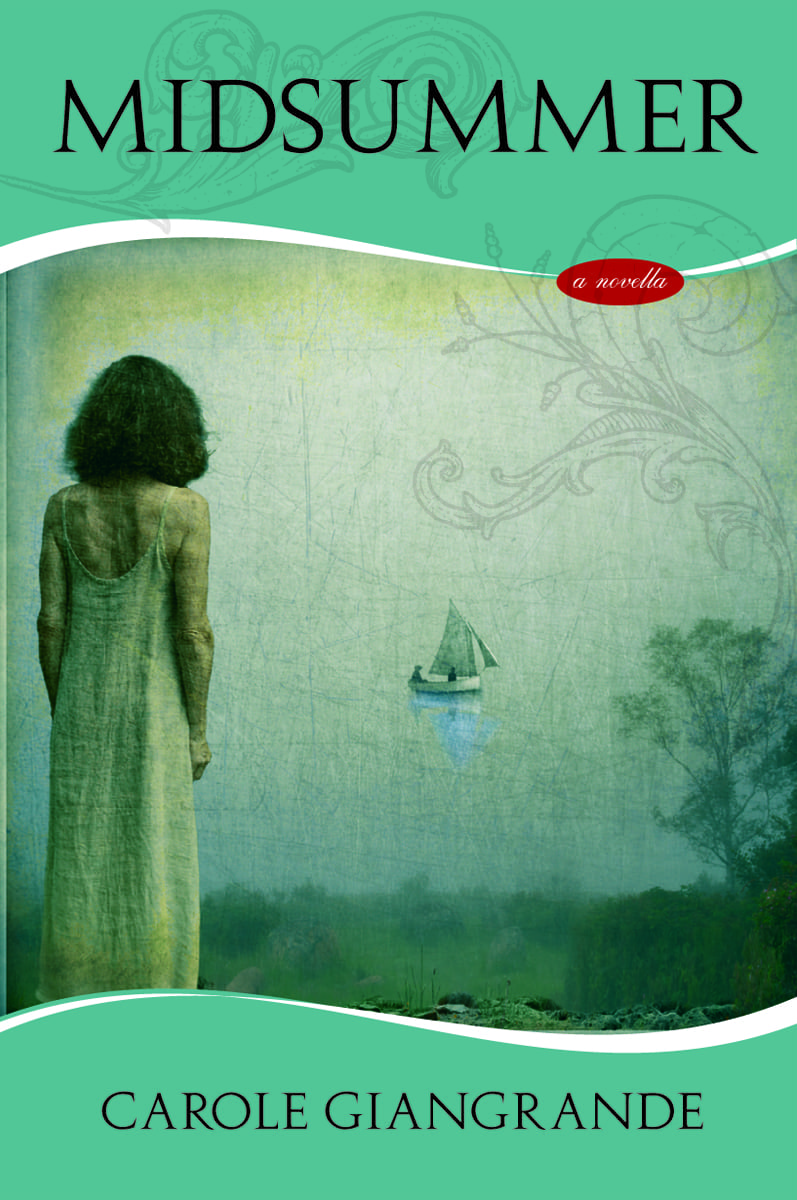
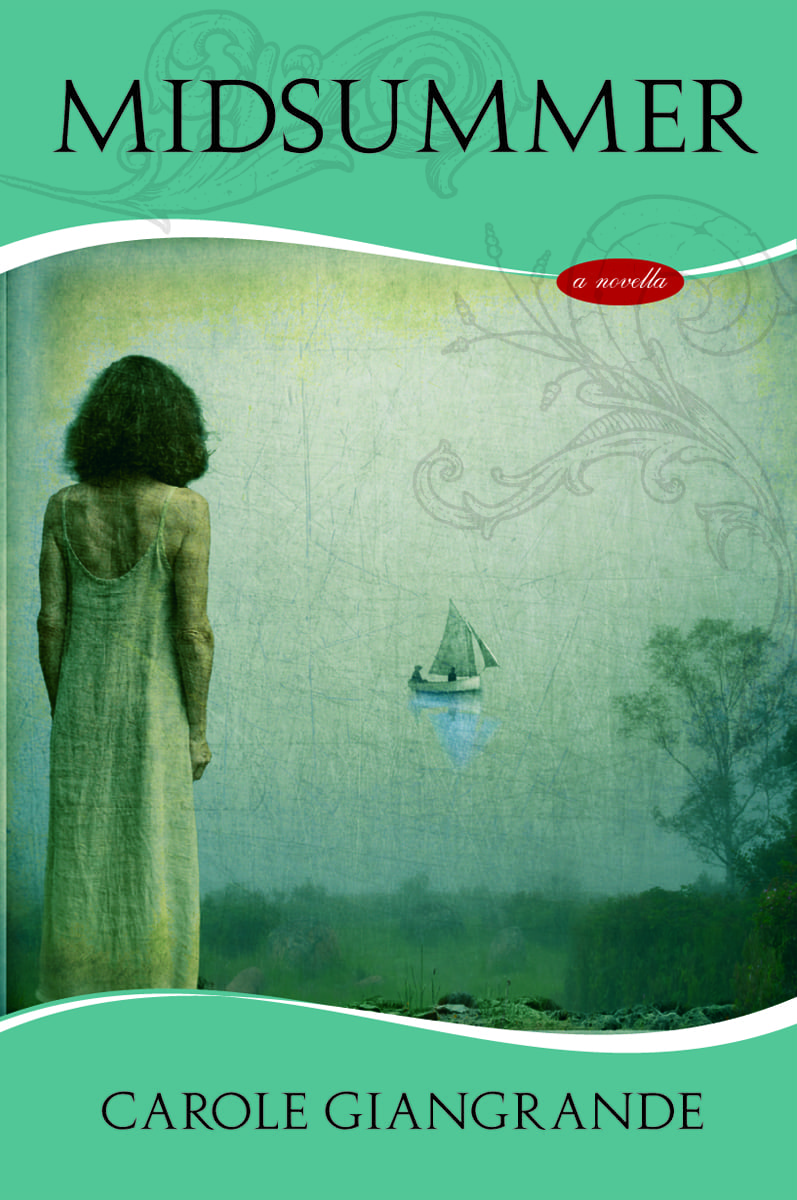
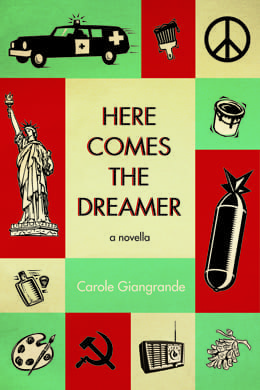

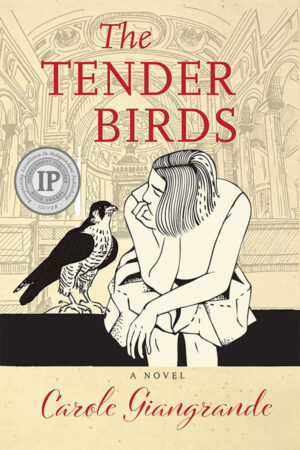
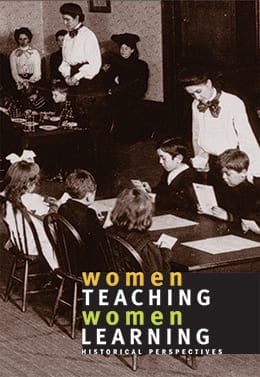
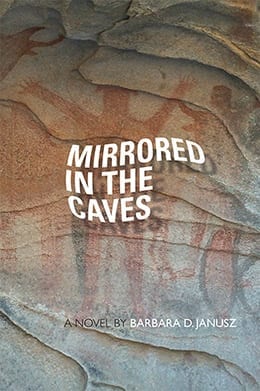
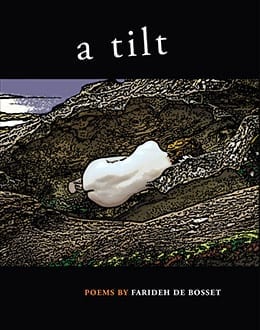
InannaWebmaster –
Andrea & the Aunts: An Imagined Literary Mentorship
Midsummer, Carole Giangrande. Inanna Publications, 2014.
All Saints, K.D. Miller. Biblioasis, 2014.
Jane and the Whales, Andrea Routley. Caitlin Press, 2013.
reviewed by Richard Cumyn, The Fiddlehead – no. 264 (summer 2015)
http://www.thefiddlehead.ca/currentissue.html
In wondering what Carole Giangrande (b. 1945) and Kathleen Daisy Miller (b. 1951) might say to Andrea Routley (b. 1980) about the writing life, I picture two engaging, encouraging literary aunts dishing out advice over copious refills of wine. Where would they meet? It might be a dive like the one in Routley’s title story, where karaoke night is hosted by drag queen Ilsa, who is transitioning from male to female. The place has a grubby but egalitarian air, a welcoming refuge for its community of misfits:
The bathrooms were redone last month with larger toilet paper reels. The coasters were supposed to protect the bar, which is still shit, the varnish chipped away by absent-minded fingernails. The low panelled ceiling, spray painted black with glow-in-the-dark stars stuck to it, is going to be redone, too. The stars were put up fifteen years ago, ambitiously, at the same time as the silver Mac-tack on the pillars. Most of the stars have fallen down, so they look like mistakes now. (134)
Judging by these, their most recent books, the writerly aunts wouldn’t automatically turn up their noses at Routley’s choice of meeting venue, although I imagine they might prefer cleaner, more sedate public spaces. The novella Midsummer leads its characters, Giangrande’s “family of dreamers” (3), to an elegant Manhattan restaurant at the top of one of the ill-fated towers of the former World Trade Center, one year before the disaster. Miller places her people at street level, in cafés, apartment building lobbies, parks and rectories, anywhere you might encounter or be haunted by someone from your past.
All Saints is an unprepossessing Anglican church struggling to keep its doors open. Congregation numbers are dwindling. It’s possible Simon, the rector, no longer believes in God. In the story, “Still Dark,” Simon, a widower, is in love with Kelly, the woman who writes Saints Alive, the church newsletter. When she leaves her sweater in his office, he lies to her, saying that he hasn’t seen it, so that he might keep it, downy soft and Ivory Soap scented, close at hand. A minor offence, one the rest of us might be excused having committed, the infraction unseats Simon’s conscience and he begins using the sweater as a fetish, a surrogate confessional.
I imagine Carole Giangrande nudging Andrea Routley at this point. “Stop texting and pay attention. You think this kind of story is lame, don’t you, but it’s the opposite.” Simon is wrestling against temptation. He’s human. For the first time since his wife died he’s feeling something akin to desire. Romantic involvement with parishioners is frowned upon. He still believes he has a soul but suspects that it has become unmoored from faith.
It is considered rather bad form these days to talk about the moral underpinnings of a work of art. Immediately, defensive voices cry out demanding clarification, challenging, “Whose morality are you referring to?” Certainly the Christian perspective can no longer pretend to hold the exclusive moral high ground in the world, its older churches crumbling and emptying out, its doctrine and dogma attacked from all quarters, while elsewhere its more charismatic manifestations grow in counterbalance, reinterpreting biblical texts to fit an updated perspective, one that accommodates bigotry and acquisitiveness. Publishing a collection of stories centred on a Canadian Anglican church, therefore, might seem on the surface to be literary suicide.
In K.D. Miller’s case it is anything but. The connection in each of the stories to this particular church is almost incidental, a conceit. The real magic is what the author does with the complete package. Every piece, each life, fits together. Take Garth, the old guy constructing a basement bedroom for his war buddy in “Barney.” His handiwork, and in a way he himself, show up later in the story, “What They Have,” which for a short story displays a novelistic scope. The vividly rendered characters populating All Saints resemble a theatre’s ensemble cast. Someone holding centre stage in one story plays a secondary role in another. It’s not a new device, certainly, but Miller employs it with a deft hand. Andrea Routley would have encountered the technique, talked about it in class, tried it out maybe, while enrolled in the writing program at the University of Victoria. It takes time and craft to build a linked story collection, one that feels as balanced and organic as this one does. Little wonder All Saints was shortlisted for the Rogers Writers’ Trust Fiction Prize.
Of her two imagined mentors, Routley might be less intimidated by Carole Giangrande, a widely published author and former CBC journalist whose novella, of the three books under review here, feels most like something spoken aloud, an evocative piece of family lore spun out across a sturdy wooden table in an Italian-American kitchen. The story, part fable, part tragic love triangle, begins in 1613 with the real-life sinking of the Dutch trading vessel Tijger in shallow water at the mouth of the Hudson River. As Michael Redhill does in his 2006 novel Consolation, Giangrande takes what was “a rather mundane” (7) historical incident, a sunken ship buried under urban landfill, and taps its vein of gold.
Flames break out somewhere aboard the wooden ship, the resultant conflagration made vivid by Giangrande’s pen, the fire “hissing, flicking its tongue; flames lick and snap at the bow, crackling as they touch the foremast. . . .” (6) The cargo of valuable pelts is lost when “the fire burns down to the waterline and vanishes into the sea.” (Ibid) The unfortunate incident might have been a forgotten footnote but for the wreck’s remarkable uncovering three centuries later. Joy, Midsummer’s narrator, tells us that in 1916 her grandfather, her “nonno Lorenzo,” was helping dig one of New York’s first subway tunnels when “his pickaxe shattered into brilliant light, revealing the shadow of a lost, three-masted ship.” (3) Completing the geographical connection, the family reunion that forms the present-day story’s culmination takes place high above the very spot where Lorenzo discovered the remains of the Tijger. Pulling the connecting threads even tighter, Giangrande makes Joy’s husband Adrian a descendant of the lost ship’s captain.
“Too coincidental, too contrived,” Andrea Routley and other readers might argue. Even to portray her characters at various points in their lives, as K.D. Miller does in All Saints, rubs the wrong way against the coarse-haired, at times prickly nap of Jane and the Whales. Routley isn’t always a strict realist. In at least two memorable scenes she gives the narrative action over to the fantastic, but for the most part she is concerned with the faithful depiction of otherwise normal people coping with unusually stressful circumstances. She keeps us in the moment, often uncomfortably close to the heat.
“I remember my first book,” an older writer might say in response to Jane and the Whales. “That urgent need to get it all down, all my oh-so-important memories mixed with dreamscapes and imaginings. It came tumbling out in a rush, closer to something bursting into bloom than painstakingly constructed.” Nevertheless, Routley’s is a competently put-together first book of short fiction. It dramatizes intense moments in the lives of characters, some older but most of them in their teens and twenties, navigating turbulent waters. In the story “Habitat,” for example, Lana, a fifteen-year-old who already has one foot out the door, worries that her father, Ray, a former wildlife conservation officer, is losing his ability to cope after the death of her aunt, his sister.
Ray stared into the empty freezer until he remembered the caribou meat was across the street. Maybe the fox had found it by now. . . . If it was still there, he could just rinse it off. He could boil it, make a stew. That would kill the bacteria. (19)
The aunts would agree, I think, that Andrea Routley could grow into a fierce good writer, even a great one. Many of her stories tell us things we might not have known about the natural world. She has that unteachable instinct for the killer instant when a character peels back whatever has been obscuring the truth. At times she overloads her sentences with detail and her endings are sometimes watery. Endings are the hardest trick to pull off well. K.D. Miller’s endings feel inevitable. You can’t imagine a better way to close. Carole Giangrande similarly gives the last note of each of the five acts of her classically structured novella the quiet momentous weight it deserves, like the stark clarity of a tolled bell. And yet, for all their experience, Miller and Giangrande might well read Andrea Routley and shake their heads admiringly, wistfully perhaps, in appreciation of those utterances that feel as though they were delivered in a lightning strike. Lana’s voice catching in a sob as she asks her father, “Are you okay, Dad? . . . Because I want you to be okay, you know” (21). A parent’s vitriolic snobbery emerging in his entitled child, a pre-school-age girl who calls her teacher “a philistine” (80) in the story “Art.” The perfect pitch of the teenage narrator of “Reflection Journal,” revealing a complicated amalgam of vulnerability and bravado with regard to her teacher:
Plus, Mr. Diaz is thirty-four. That is TWICE my age. If I were seriously sexually harassing him, that would make me a kind of reverse-pedophile, and I am just a thief. That is a whole other psychology from diddlers. (91)
Compare Routley’s trenchant impersonation of an immoderate adolescent with Giangrande’s more lyrical, at times elegiac mood, as Joy shows her Italian cousin Leonora around Lower Manhattan and the building site of the Twin Towers in the summer of 1971:
Because we were standing on an island, I imagined us gazing out over the sea, then turning to watch these two grey forms, their strange fragility of arches and latticework unmoored as they drifted upward, hovering over the city. Mesmerized, I began to wonder what was in the air down there, as all at once I stood inside the noon of midsummer, in an unknown June when the elegant towers would leave no shadow, would vanish into light. (45)
In each case the tone fits the subject matter: Giangrande, looking back, layering public and personal history in an exercise of remembrance that contains within it the seeds of expiation; Routley, choosing instead to inhabit dramatic moments freed of the temporal framework so present in the work of her two literary seniors. It makes sense. As we age, the past grows, taking on greater significance. Older writers simply have more material, more remembered time with which to work. They can manipulate it the way a child plays with modelling clay. The present without regard to the past can be an inert unbendable thing, of little use except to lovers and advertisers.
A young writer could hardly do better than to study K.D. Miller’s chilling story, “October Song,” a series of letters from Miss Alice Vipond to Simon, Rector of All Saints. An old woman now and a former member of the congregation, Alice has been incarcerated in an institution for the criminally insane since 1957. She writes in the mannered, crystalline prose of a time when intelligent, educated, unmarried women like her had few choices of occupation: secretary, nurse, or, as in her case, schoolteacher. What is most unsettling in Alice Vipond, aside from the details of her unspeakable crime, is her candid perceptiveness. She picks up on the smallest details gleaned from Simon’s letters, expressing accurate insights as to his state of mind. “It shouldn’t really have surprised me to learn that no one has addressed you as Reverend for several years,” she writes in her response to his first missive as a participant in a volunteer correspondence program (149). On one level she is letting him know that despite her long life of social isolation she is aware that the world has become a much more informal place than it was when she lived in it as a free woman. In a more ominous sense, however, she can see just how shaky is his faith, how unsteady his foundation as a pillar of the diocese. She says everything he might have said to himself in self-doubt; she is seductive Satan to his wavering Christ in the wilderness.
Good fiction resists definitive interpretation and rewards re-reading. “October Song,” like All Saints as a whole, cannot be said to be about a single theme. The story is no more about Simon’s crisis of faith than it is about Alice Vipond’s reason for having committed her horrific, self-defining act. If anything it is the record of an intimate communication between strangers, an exchange that crossed a line it should not have and ended. The story’s power rests in the voice, that of Alice, someone who sounds sane and reasonable in her letters and yet is neither. In this instance, K.D. Miller’s writing evokes the name of another Alice, Canada’s recent Nobel laureate, she who imbues her fiction with the same category resistant, uncontainable, irresistible force.
— Richard Cumyn’s most recent book is Famous Last Meals, a collection of three novellas.
InannaWebmaster –
“Midsummer by Carole Giangrande”
reviewed by Dolce Bellezza – June 12, 2014
http://www.dolcebellezza.net/2014/06/midsummer-by-carole-giangrande.html
How the character of Aunt Elena resonated with me. An elderly woman of great elegance, she comes to America with her husband on Midsummer, June 21, to celebrate their anniversary. But, her purpose lies deeper than that. The luxurious dinner will also be the setting for an opportunity to heal, especially for her bother, if only he can let himself find the same grace that gives his sister peace.
In the tumultuous period of the early 70’s, Elena’s daughter came to America to visit her cousin. Through a tragic accident, and perhaps warnings left unsaid, she never returned to Italy. The family members with whom she lived in America still hold themselves responsible, after decades of grief.
It’s hard to say exactly who is to blame when an accident occurs, if, in fact, blame can be correctly placed at all. Perhaps it is fate, or the randomness of life, which makes our lives so brief. So fragile. But, I know what it is to question, endlessly, one’s own responsibility. One’s choices. How liable are we for one another?
The ties of family, the place we hold in history, the issues of our personal culpability are the key issues in Carole Giangrande’s novella. It is a seemingly simple book, which examines complex emotions. It is an especially perfect read for summer.
InannaWebmaster –
“Book Review: Midsummer by Carole Giangrande”
reviewed by Julie G., Book Hooked Blog – June 11, 2014
http://www.bookhookedblog.com/
From Goodreads:
All her life, Joy’s been haunted by a man she’s never met — her visionary grandfather, the artist Lorenzo. At work on digging a New York subway tunnel, his pickaxe struck the remains of an ancient Dutch trading ship — and a vision lit up the underground, convincing him that he was blessed.
As it turned out, his children did well in life, and almost a century later, his granddaughter Joy, a gifted linguist, married the Canadian descendant of the lost ship’s captain. Yet Nonno’s story also led to the death of Joy’s cousin Leonora, her Aunt Elena’s only child. It was a tragedy that might have been prevented by Joy’s father, Eddie, a man who’s been bruised by life and who seldom speaks to his sister.
Yet in the year 2000, he has no choice. Wealthy Aunt Elena and Uncle Carlo are coming from Rome to New York City to celebrate their fiftieth wedding anniversary. They’ve invited the family to dine at the sky-high tower restaurant above the tunnel where nonno Lorenzo saw his vision long ago. On the first day of summer, Elena and Eddie will face each other at last. Midsummer is a story of family ties and fortune, and of Minding peace as life nears its close, high above the historic place where nonno’s story began.
Writing
I feel like maybe I have a bit of an unfair bias against novella as a format, probably because I see it as a tool that publishers use to eke a few more dollars out of their big name series books (cynical, party of one). This one, however, may just change my mind. First of all, it’s not part of a franchise super popular series, and second of all, it’s beautifully written. The setting is perfect, the characters are all sympathetic, and I was totally swept up in the story of family drama.
Entertainment Value
A perfect Sunday night read. I devoured it in one sitting easily given the short length, but it still packed a punch emotionally. Family dramas are a particular love of mine, and I really enjoyed getting to know this one. I wish there had been more Aunt Elena because I totally fell in love with her.
Overall
I think this is a good starting point for those like me who have avoided novella as a format. It’s beautifully done and certainly has the literary aspect I was hoping for in terms of writing. It also has a great story that pulls the reader in completely. Definitely recommend it.
InannaWebmaster –
“Book Review and GIVEAWAY: ‘Midsummer’ by Carole Giangrande”
reviewed by West Metro Mommy Reads – June 5, 2014
http://westmetromommy.blogspot.ca/
Novellas are sort of in the limbo-land of literature. Too long for a short story, not long enough for a novel. I will admit that I haven’t read many, mostly because I just haven’t had the opportunity. The few that I have read have been part of a collection, so this is the first stand-alone novella I’ve read.
There are so many things to appreciate in this book. Giangrande’s style is truly poetic. She gives this story an engaging other-worldly feel that borders on the magical. She is also able to really focus in on the story–which is surprisingly complex for so short a book–and every word is essential.
Another surprising aspect of this book is the depth Giangrande is able to give the characters. The most intriguing character, Leonora, is not even truly present in the book. I would love to have an Aunt Elena–a weaver of tales and family history. But, on the flip side, Eddie is as tangible as stone.
I read this book in one sitting (and in little over an hour) and thoroughly enjoyed it. If I had any complaints, it would be only that it took me a couple of chapters (really, only a couple of pages) to get my feel of the book. But, other than that, this was a delightful read.
InannaWebmaster –
“Review: Midsummer, by Carole Giangrande”
reviewed by Biblioteca – June 3, 2014
http://www.bibliotica.com/2014/06/review-midsummer-by-carole-giangrande/#comment-6573
You know how, when you have a large family gathering, one where the assembled family spans the generations, and everyone knows a different piece of family history, so you’re never entirely certain where things begin and end and what the real truth of any story might be? That’s the feeling I got from reading Carole Giangrande’s novella Midsummer, and in that sense, it was a lot like coming home, spending time around the seemingly-huge round dining table in my Italian grandmother’s house, hearing family stories.
But where my family is one ruled by drama and comedy, Giangrande’s story is a much calmer, more poetic look at family dynamics, and love and loss, and at the way history informs us.
Told mostly in the first person voice of Joy, granddaughter of Lorenzo, a manual laborer who finds the remains of a Dutch sailing ship in old (old) Manhattan, we are treated, not just to her life and perceptions, but also to those of her Aunt Elena, keeper of the family stories, her sheltered cousin Leonora, her father, and her own family, Dutch-born Adrian, and their two sons.
The language of the novella is absolutely luxurious, a blend of English and Italian that rolls of the tongue like honey wrapped around a Vivaldi symphony. More than once, I found myself reading passages out loud because I loved the language so much, to the amusement of my husband (and the confusion of my dogs). It’s also incredibly poignant as the action in the story takes place, not just in a world where the twin towers haven’t yet fallen, but in a world where they’re just being built. Passages like the one below, then, had a special resonance for this Jersey-girl-turned-Texan, who grew up in a Jersey shore community that was decimated by that disaster:
Because we were standing on an island, I imagined us gazing out over the sea, then turning to watch these two grey forms, their strange fragility of arches and latticework unmoored as they drifted upward, hovering over the city. Mesmerized, I began to wonder what was in the air down here, as all at once I stood inside the noon of midsummer, in an unknown June when the elegant towers would leave no shadow, would vanish into light.
Lyrical, languid, brilliant, Midsummer is a fast read for a slow and sultry afternoon. I highly recommend it.
Goes well with Caprese salad and iced tea.
InannaWebmaster –
“Midsummer by Carole Giangrande”
reviewed by Serena M. Agusto-Cox, Savvy Verse and Wit – May 29, 2014
http://savvyverseandwit.com/2014/05/midsummer-by-carole-giangrande.html#respond
Midsummer by Carole Giangrande is a poetic novella that settles the reader into the complexities of an immigrant family from Italy — a brother who chooses to stay in America and make his way in finance and a sister who returns to Italy to begin a life with her successful husband. Nonno Lorenzo came to America and dug the New York City subway tunnels, only to land his pickaxe on the hull of a missing ship — Tijger — that was caught on an old shoreline. Beneath his working class roots in America, the man was a visionary artist who never became famous, but he begets a number of dreamers, including a granddaughter who has suffered the most along the way — losing family and friendship.
“‘One day,’ said my aunt, ‘I would like you to hear my stories in Italian.’
‘But you grew up in America,’ I said.
‘The stories grew up somewhere else,’ she replied.” (page 14)
Giangrande navigates memory and emotion carefully, guiding the reader outside the prime maritime routes into the deepest seas of human connection, with one’s family. The intersection of Joy’s family and that of her husband, Adrian, comes together just as her grandfather discovered a lost Dutch ship beneath the Twin Towers in New York City. Through family legends and a shared language, Giangrande weaves a story steeped in myth and love, despite tragedy.
“A creature trapped in a pretty, long necked bottle, a frantic beating of wings against glass, waiting for deft fingers, the touch of his hand to release her. I sensed she enjoyed her entrapment for the moment of release it brought.” (page 53)
Joy and her family are caught in their own silences, unable to utter apologies even though they exist without being uttered. Lorenzo’s ability to see into the future through his painting has left the family with a haunted legacy, but it is clear that the legacy will be ever-lasting. Like a painting that comes to life, Midsummer by Carole Giangrande is like the longest-day of summer in families when tragedy saddens everyone in different ways, regrets threaten to bring members to their knees, and forgiveness is a shining beacon that can save them all.
InannaWebmaster –
“TLC: Midsummer”
reviewed by Book Lady, Must Read Faster – May 27, 2014
http://mustreadfaster.blogspot.ca/2014/05/tlc-midsummer.html
“Lovely. This is the first word that comes to mind about this book. It’s rather short, but packs a intensely emotional wallop. The stories weave together in such a unique way that doesn’t quite show it’s true meaning until the very end.”
This is truly a story that must be savored slowly, and enjoyed thoroughly.”
InannaWebmaster –
“Carole Giangrande’s Midsummer sets sail in search of distant turning points. She holds the heart of her story gently, and she steers us gracefully through time, and memory. The elegance of her language casts long shadows. She moves us as she writes from the center of longing and wonder.”
– Karen Lee Lewis, author of What I Would Not Unravel
“Midsummer is emotionally focused and charged with the power of archetype, its undercurrent of passion perfectly controlled. Carole Giangrande has mastered the novella form.”
– Eva Tihanyi, author of Flying Underwater: Poems New and Selected